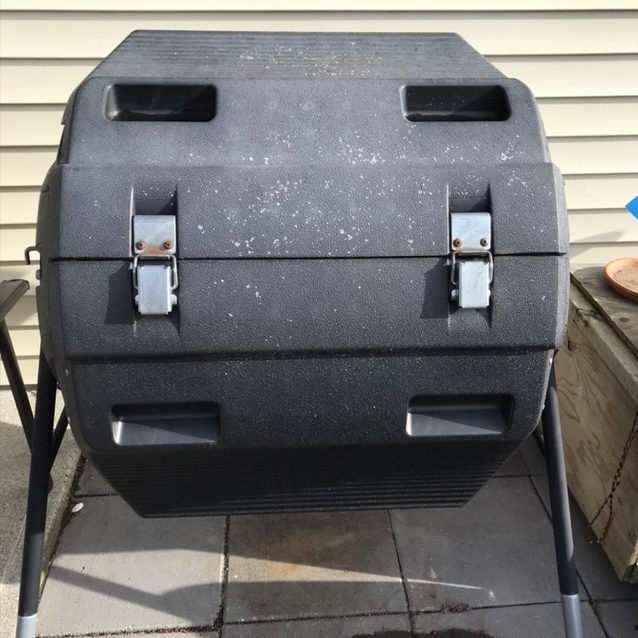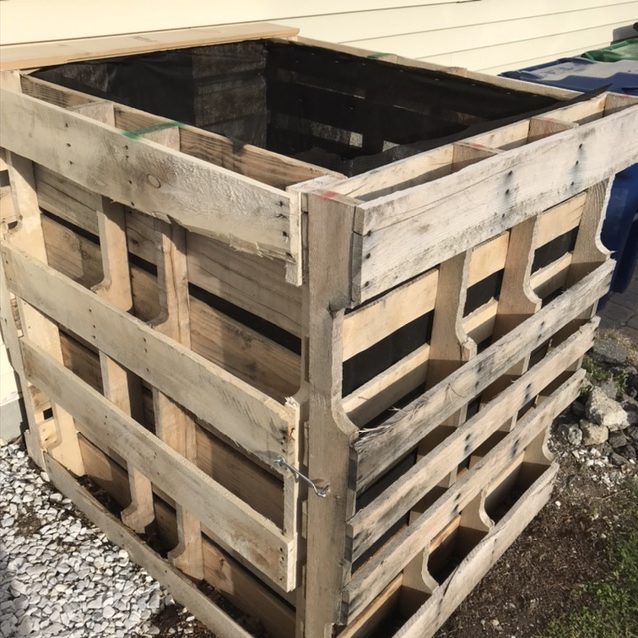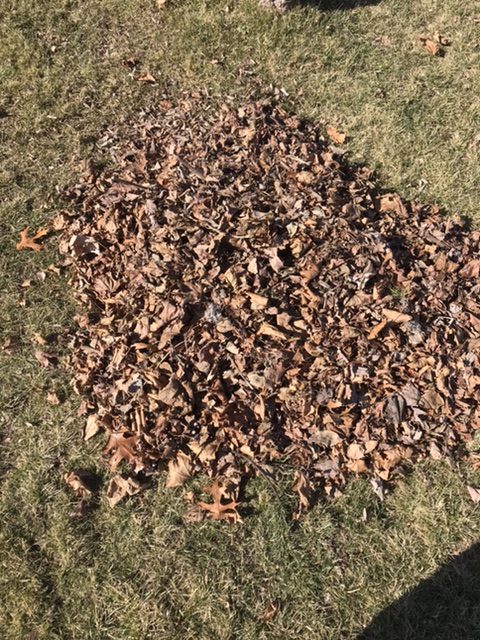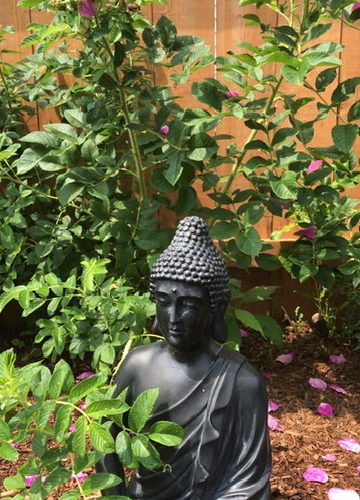With a lot of us having more time on our hands it seems like a good time to acquire a new hobby. Something to take our mind off of current events. Maybe like gardening? You’ll need good soil… composting can be helpful. I had Willy be my resource to shed some light on the subject.
I love throwing food scraps outside into our tumbler. Does that sound weird? It makes me feel like I’m doing my part in sustainable living. The concept of growing our garden from our own recycled organic products is cool. Composting requires some effort but it’s free, reduces the amount of waste we contribute to our trash and if you love to garden it really makes your yard flourish.

Food scraps 
Tumbler 
Compost bay 
Inside the compost bay
So what is composting anyway? Well, it consists of organic materials, such as leaves, fruit/vegetable scraps, grass clippings, etc., that brake down into a usable substrate. There are various methods of composting that exist but aerobic is preferred. The breakdown process is fast since the microbes are able to breathe. A fast breakdown process yields quick substrate use.
So what do we need?
A specific ratio of 4 different components is what a healthy mixture of compost calls for:
1. Carbon-rich materials
- Fallen leaves and twigs that are dry or damp
- Cardboard that is free of dyes, glue, and plastics
- Straw
- Wood chips
2. Nitrogen-rich materials
- Food scraps: coffee grounds, fruit/vegetable peels, eggshells, dead house plant leaves, etc *One thing to use sparingly, if at all, is citrus peels. They can throw off the pH of the substrate and delay breakdown.
- Grass clippings from a lawn mower
3. Air
4. Moisture
How do we start?
Space!
The bigger a compost pile or bin, the quicker it will break down. A standard size of 3ftx3ftx3ft is a good starting point. If that isn’t available it’s not the end of the world. A good option to keep compost contained is to buy or build a compost tumbler. This will keep it free from excess rain or moisture. Having a tumbler allows for easier mixing too. An open pile is fine if you are able to take the time to maintain it. Odor should not be a worry as proper compost should never give off a foul smell. The microbes are constantly breaking down the contents and the aroma should be earthy.
Gather materials
Saving the food scraps is the easiest part. We eat a lot of fresh ingredients so we keep a bowl in our kitchen for all of our scraps and coffee grinds. It gets emptied every other day into the outside compost bin. Gather leaves, twigs and fresh cut lawn clippings to add. The smaller the particles of organic material, the easier they break down in the compost pile. Having a leaf shredder or a friend with a leaf shredder helps but is not necessary.

Carbon material 
Leaf shredder 
Inside a tumbler
What’s the method?
Alternating layers of 75% carbon rich and 25% nitrogen rich materials is how to create a compost pile. Add a little bit of moisture occasionally to keep the compost a similar consistency as a damp sponge. Heat will begin to generate as the breakdown process begins. Below the surface of the material, temperatures should ideally be anywhere from 120-160degrees Fahrenheit. If you are super into controlling the temperature, having an outdoor thermometer isn’t a bad idea. Occasionally turning or tumbling the compost every two weeks might be indicated if the temperature drops too low. Introducing more airflow by turning will start decomposition all over again. Composting can be as involved or as lax as you want it to be. Intervening often and managing the small details is necessary only if you want a quicker and more efficient result.
Ready?
When compost is finally usable it will resemble black dampened soil. Sifting the material filters out smaller particles from bigger pieces that haven’t quite finished breaking down yet. The bigger pieces can get thrown back into the tumbler to cook a little more.
Autumn is a good time to put a layer of compost around the base of the plants. This is top dressing. Top dressing protects the plant during winter by keeping water down in the roots and preventing them from getting too cold. Spring is another good time to top dress because any soil that has eroded throughout the winter will be replenished.
Compost has a lot of good nutrients in it for the plant, however “feeding” the plant isn’t the first objective when composting. Building the soil base over time so plants can repeatedly thrive year after year is the main objective. The better the soil, the better your yard of flowers and plants will be. “…and that’s how you know your shit is poppin’ off.”


1 Comments